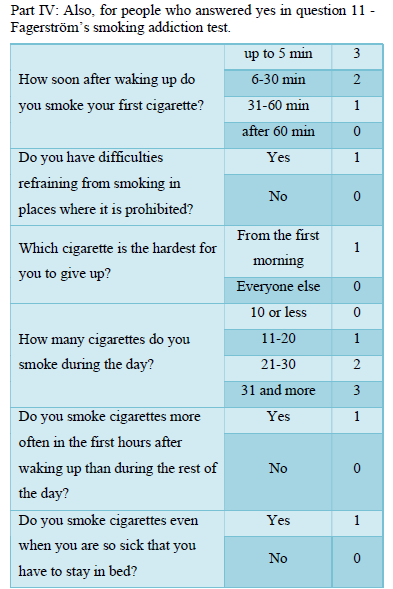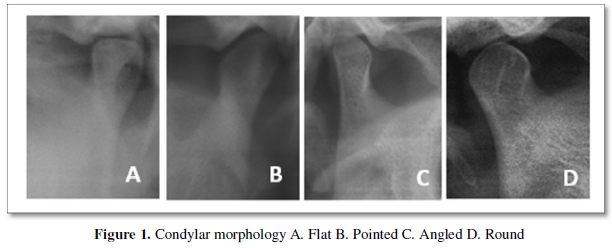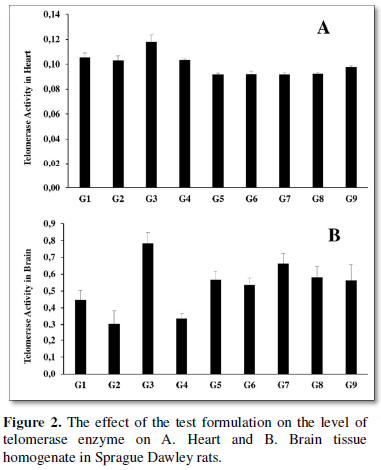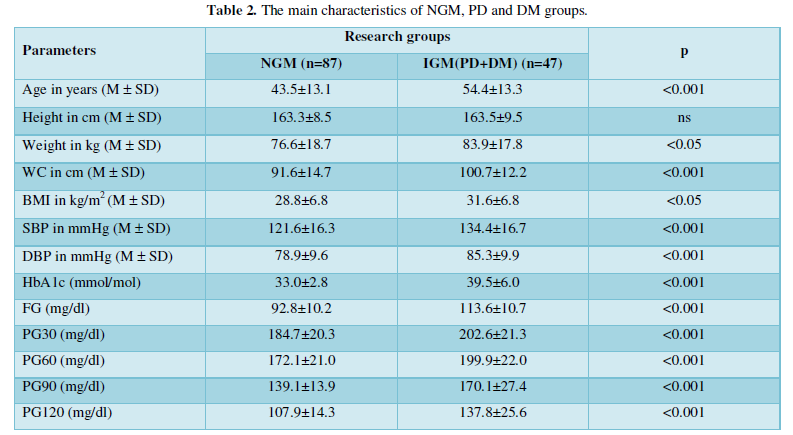Research Article
Tobacco Products in the Life of Pulmonary Patients
5230
Views & Citations4230
Likes & Shares
Introduction: smoking is the inhalation of smoke resulting from the burning of leaves of the nicotinic species. Europe-wide tobacco history dates to the 15th century, which in the 20th century has caused every 10 deaths in the world. According to the World Health Organization (WHO), around 25% of the adult population smokes in the world. In 2000, it caused 69,000 deaths in Poland, of which 43,000 were premature deaths. The most common diseases caused by smoking are cardiovascular disease, cancer, and pulmonary disease.
Material and Methods: The survey covered 100 people staying at the Malopolska Hospital of Lung Diseases and Rehabilitation. E. Wojtyła in Jaroszowiec. The survey consisted of four parts and mainly concerned the role of tobacco products in patients' lives.
Goal: Assessment of nicotine addiction and the role of tobacco in respondents.
Results: After analyzing the responses received from patients, they were divided into four groups: 1- people who still smoke (16 people), 2- people who have smoked in the past (49 people), 3- People who are passive smokers (20 people) 4- people who have never had contact with tobacco smoke (15 people).
Discussion: In 2007, every fourth person in Poland admitted to smoking, despite various warning actions about the effects of addiction, which kills 700 thousand people in Europe. Smoking cigarettes is not only a health but also an economic problem, because huge costs are incurred for the treatment of tobacco-related diseases. However, fighting addiction is not easy, because the body becomes addicted to nicotine absorption both behaviorally and pharmacologically. And although every 10 sec they kill one person, they still enjoy enormous "popularity" among both women and men.
Results: As many as 85% of respondents are people who have had or still have contact with tobacco smoke. Addiction affects a similar number of women and men. Only the difference in education between smokers was observed.
Keywords: Tobacco, Addiction, Firestorm questionnaire
INTRODUCTION
Smoking according to the International Statistical Classification of Diseases and Health Problems ICD-10 is classified with the F17 code - mental and behavioral disorders caused by smoking T65 - the effect of toxic other and undefined substances -T65.2- tobacco and nicotine [1]. Smoking cigarettes consists in inhaling the smoke, which is generated because of burning leaves of the nicotiana species, having about 60 varieties [2]. It causes the body's addiction to the desire to absorb the right dose of nicotine, causes both pharmacological and behavioral addiction [3]. The European history of tobacco dates back to the 15th century, when Christopher Columbus received tobacco from the Indians during his trip to America, which 500 years later caused every 10 deaths in the world [4,5]. Currently, according to the World Health Organization (WHO), it is estimated that around 25% of the adult population (over 15 years of age) in the world smokes. In Poland alone in 2000, tobacco was the cause of 69 thousand. deaths, including 43 thousand are premature deaths, i.e., deaths of people aged 35-69 [6]. Deaths occur because of diseases caused by the chemicals in a cigarette. The most common diseases include cardiovascular diseases, cancer (mainly of the lung, larynx, mouth) and pulmonary diseases - most often chronic obstructive pulmonary disease (COPD) [7]. It is estimated that approximately 80-90% of lung cancer patients are smokers, and the probability of developing the disease increases with the number of cigarettes smoked and the duration of smoking [8]. Likewise, 80% of smokers will develop COPD, which in the last year ranks third among the causes of death in the world [9].
MATERIAL AND METHODS
The study involved 100 randomly selected patients staying at the pulmonology ward at the Małopolska Hospital of Lung Diseases and Rehabilitation them. Edmund Wojtyła in Jaroszowiec, in the period from February to July 2019. There were 57 women and 43 men among the respondents. The average age was 67 years. The patients were asked to complete a questionnaire (Appendix 1), which consisted of four parts (the first three parts by the author and the fourth part is the smoking addiction test according to Fogerstrm). The obtained results were analyzed statistically.
Appendix 1: Questionnaire.
Part I:
- Gender
- Age
- The reason for being in the pulmonary rehabilitation department
- Length of illness for the aforementioned ailment
- Coexisting diseases
- Place of residence: village, town
- Residence: single, with family
- Education
- Currently, I am professionally active, a pensioner, a disability pensioner, and an unemployed person
- My work that I do or have done is manual and mental work
- Currently Yes, I smoke, I do NOT smoke
Part II: This part was answered by persons who answered in the negative in question 11.
- Does anyone from your household smoke?
- Have you ever smoked?
If YES, how long have you been smoking?
How many years have you smoked?
What was the reason for quitting?
Part III: This part was answered by persons who answered in the affirmative in question 11.
- How many years do you smoke?
- How many cigarettes a day?
- Has there ever been an attempt to quit?
- Is smoking fun?
- Do cigarettes taste good?
- Are there any other reasons why you smoke?
- Are cigarettes expensive?
- At the moment, would you like to quit the addiction?

OBJECTIVE
The aim of this study was to evaluate nicotine addiction and the role of tobacco in people suffering from tobacco-related diseases now and in the past.
RESULTS
After analyzing the obtained answers in the questionnaire, the group of patients of 100 people was divided into four groups:
Group 1: People who are in the pulmonology department and are still active smokers - 16 people, including 5 women and 11 men.
Group 2: People who admit to active smoking in the past, but at the time of completing the questionnaire they are non-smokers - 49 people, including 23 women and 26 men.
Group 3: People who have never smoked but are still exposed to passive smoking by people in the shared household - 20 people, including 17 women and 3 men.
Group 4: People who stay in the pulmonary department, although they have never been active smokers or have been in the environment of smokers - 15 people, including 12 women and 3 men (Figure 1).

Among the people who admitted smoking, they were in the pulmonology department due to chronic obstructive pulmonary disease (9 people), asthma (6 people), and one with emphysema. The vast majority of these people have been smoking for over 40 years - 12 people and four people have a shorter ‘adventure’ with smoking. These people smoked an average of 14.6 cigarettes a day. Only 18.75% of the group of ‘smokers’ made an attempt to quit smoking in the past, and now 81.25% of respondents declare their willingness to quit smoking. The main reason for quitting smoking is that to improve health (85%), for financial reasons (18.75%), 75% of respondents think that cigarettes are expensive, and one person (6.25%) is the reason to stop smoking, that they scarify life. However, 87.5% of people say that they enjoy smoking cigarettes, 75% of people think that cigarettes have a calming effect on them, and 75% of respondents in this group also like cigarettes. Patients from this group were also asked to complete the fourth part of the Fagerström addiction questionnaire [10].
The obtained results are presented in Figure 2.


Analyzing the above chart, 31% of respondents obtained 7 or more points, which means a strong dependence. It is not only a behavioral but also a pharmacological addiction [3], often considered by addicts that they are unable to live without nicotine. On the other hand, 69% of people obtained a result below 7 points, which may mean that these people do not have pharmacological addiction.
The second and most numerous groups, numbering 49 people, are people who admit to smoking in the past, and who stay in the pulmonary department mainly because of COPD - 53%, Asthma - 31%, and lung cancer - 10%, emphysema 4% and inflammation bronchitis 2%. Table 1 shows the smoking time and the time elapsed since quitting the addiction.
The most numerous groups are people who have not smoked for 11 to 20 years - 15 people, while when it comes to smoking time, the most numerous groups were smoking time from 21 to 30 years -17 people.
Table 2 below shows the most common reasons why they quit the addiction.
While analyzing the above table, despite the fact that the answer “for no reason” appeared in the second place, the vast majority of respondents quit the addiction only when the disease appeared, which is definitely too late.
The third group consisted of people who have never smoked but live with smokers in their households and are therefore exposed to passive smoking. The group consisted of 20 people, including 17 women and 3 men. Due to bronchial asthma - 12 people, COPD - 7 people and one for pulmonary fibrosis - were in the pulmonary department. The fourth and last group consisted of 15 people, 12 women and three men, these people had never smoked cigarettes and the family from their shared household also did not smoke. They stayed in the ward due to asthma 13 people, 1 person with a history of lung cancer and one for bronchiectasis.




DISCUSSION
According to the 2007 report on the nationwide survey on attitudes towards smoking, every fourth person admitted to smoking cigarettes on a daily basis [11]. And despite many warnings, such as the Act of 22 July 2016 “On protection of health against the consequences of the use of tobacco and tobacco products”, Article 2, point 14 requires manufacturers of tobacco products to place warnings on the packaging in the form of photos and text about the effects of smoking [12] still kill nearly 700,000 people in Europe each year [13]. However, the tobacco addiction is not only a health problem, but also an economic one. According to the study by Motrzyk [14] the average cost of treating tobacco-related diseases amounts to PLN thousand. PLN 1,895,932.5, of which the largest percentage is transferred to COPD. It is also estimated that the number of patients with advanced COPD is 400,000 and is, next to lung cancer (also a tobacco-related disease), the most common palliative treatment [15].
However, attempts to quit the addiction are not easy, if only because of a strong addiction, which is characterized by a great need to take nicotine, often a lack of control of one's behavior, and even preferring smoking a cigarette to other activities [3]. This difficulty is evidenced by the result among my respondents, where 81.25% of smokers made an unsuccessful attempt to quit. Also, data from the work of. Szpringer [16] which states that 80% of smokers admit that they tried to quit the addiction at least once in their life. This is despite the fact that the pharmaceutical market is rich in substances facilitating the fight against addiction, such as nicotine gums, patches or medications - Bupriopion - an antidepressant drug. However, it is also important to motivate the addicted person to fight, but also to talk to the doctor [17]. Cigarettes, which were introduced on a production scale in 1840, were initially smoked only by men [18]. Today the number of smoking men and women equalizes. Among my respondents, the difference was 6.2%, so there was definitely a slight majority of men. In the respondents who were still smoking, I noticed differences in education. The largest number of addicted people are people with secondary education 50%, followed by those with vocational education 25%, higher education 18.75% and primary education 6.25%. These results are not confirmed by the study by Puto [19] who in their work did not observe any significant relationships between tobacco addiction and education.
Summarizing all the above information, I believe that the tobacco addiction, which causes death every 10 sec around the world should become a priority issue for the government and the whole of humanity to fight it [20].
CONCLUSIONS
- The vast majority of people (85%) in the pulmonary rehabilitation unit have or have had contact with nicotine smoke (in a passive and / or active form) and are currently treated for tobacco-related diseases.
- Among the surveyed pulmonary patients, still 16% are active smokers.
- There were no significant differences between the number of female and male smokers, but there was a noticeable difference in education, with a vast majority of people who graduated from secondary school.
- International Classification of Functioning, Disability and Health (2001) Międzynarodowa Klasyfikacja Funkcjonowania, Niepełnosprawności i Zdrowia. Available online at: https://www.csioz.gov.pl/fileadmin/user_upload/Wytyczne/statystyka/icf_polish_version_56a8f7984213a.pdf
- Nikodemowicz M (2007) The impact of smoking on the circulatory system. Przegl lek 64(4): 42-44.
- Samochowiec J, Rogoziński D, Hajduk A, Skrzypińska A, Arentowicz G, et al. (2020) Mechanism of addiction and methods of treating nicotine addiction. Alcohol Drug Addict 14(3): 323-340.
- Zieliński J (2008) Burdens resulting from smoking. Pneumonologia i Alergologia Polska 76(3): 170-173.
- Szcęch B, Dyzman-Sroka A, Kubiak A, Trojanowski M, Malicki J (2014) Analysis of health awareness of the effects of smoking among selected social groups. Probl Hig Epidemiol 95(4): 871-879.
- World Health Organization (2009) The state of threat of the tobacco epidemic in Poland. Available online at: https://www.euro.who.int/__data/assets/pdf_file/0006/68064/E92470.pdf
- Przybylska-Kuć S, Bartoszek E, Dec M, Myśliński W, Mosiewicz J (2014) Awareness of smokers regarding complications associated with smoking. Fam Med Prim Care Rev 16(2): 153-154.
- Jassen E, Szymanowska A, Siemińska A, Jassen J (2009) Pneumonologia i Alergologia Polska. tom 77(5): 469-473.
- World Health Organization (2020) Available at online: https://www.who.int/about
- MPPL (1991) Tabela 3.22-2. Kwestionariusz oceny uzależnienia od nikotyny wg Fagerströma. Available online at: https://www.mp.pl/interna/table/B16.3.23-2
- Trząsalska A, Staszyńska M, Krassowska U (2017) Report from a nationwide survey on attitudes towards smoking, Kantar Public for the Chief Sanitary Inspectorate. Available at online: https://gis.gov.pl/wp-content/uploads/2018/04/Postawy-Polak%C3%B3w-do-palenia-tytoniu-Raport-2017.pdf
- Item 1331 ACT of 22 July 2016 amending the Act on health protection against the consequences of using tobacco and tobacco products, Chancellery of the Sejm, p1/14, Journal of Laws of 2016: Available at online: https://isap.sejm.gov.pl/isap.nsf/DocDetails.xsp?id=WDU20160001331
- Report on new EU rules on tobacco products: more health warnings on packaging and ban on the use of distinct flavors Brussels (2012) Report No 2/2013. Available at online: https://www.senat.gov.pl/download/gfx/senat/pl/defaultopisy/296/5/1/002.pdf
- Motnyk M, Chrobot M, Zemła B (2016) Selected economic and health consequences of tobacco consumption for the state budget and the public sector. Polish Rev Health Sci 2(47): 184-190.
- Jassem E, Batura- Gabyel H, Cofta Sz, Doboszyńska A, Farnik M (2012) Recommendations of the Polish Society of Lung Diseases regarding palliative care in chronic lung diseases. Pneumonol Allergol Poland 80(1): 41-64.
- Szpringer M, Makowska A, Olędzka M (2016) Nicotine addiction and evaluation of the effectiveness of quitting smoking in adults. Environ Med 19(1): 43-50.
- Zeleń I, Śliwińska-Mossoń M. Milnerowicz H (2012) Preparations used in the treatment of nicotine addiction. Med Rev 69(10): 1098-1102.
- Napierała M, Florek E (2015) Historical Trends in the Prevalence of Smoking among Women. Med Rev 72(3): 155-157.
- Puto G, Repka I, Ścisło L, Targosz B (2016) The influence of demographic and social variables on smoking and drinking alcohol by the elderly. Gen Med Health Sci 22(4): 298-302.
- Bojkowski Ł, Mojs E (2017) Smoking and the consequences of this addiction for the health of the elderly. Polish Rev Health Sci 2(52): 220-224.
QUICK LINKS
- SUBMIT MANUSCRIPT
- RECOMMEND THE JOURNAL
-
SUBSCRIBE FOR ALERTS
RELATED JOURNALS
- Journal of Rheumatology Research (ISSN:2641-6999)
- Journal of Infectious Diseases and Research (ISSN: 2688-6537)
- Journal of Ageing and Restorative Medicine (ISSN:2637-7403)
- International Journal of Internal Medicine and Geriatrics (ISSN: 2689-7687)
- Chemotherapy Research Journal (ISSN:2642-0236)
- Journal of Psychiatry and Psychology Research (ISSN:2640-6136)
- Journal of Blood Transfusions and Diseases (ISSN:2641-4023)




